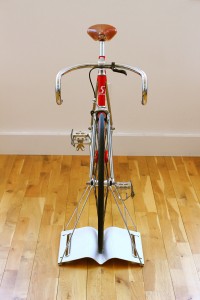 I am traveling in China this week, and at the moment I’m watching the evening celebrations of the Dragon Boat Festival holiday on Qiandeng Lake from my hotel window in Foshan. I think it is about time to get outside for a closer look, but first it seems fitting to quickly share a design for a bike stand that was inspired by Chinese culture and art. David Hu, designer of the Guilin Bike Stand, explains;
I am traveling in China this week, and at the moment I’m watching the evening celebrations of the Dragon Boat Festival holiday on Qiandeng Lake from my hotel window in Foshan. I think it is about time to get outside for a closer look, but first it seems fitting to quickly share a design for a bike stand that was inspired by Chinese culture and art. David Hu, designer of the Guilin Bike Stand, explains;
“Since ancient times, Chinese people have regarded nature as their true home and many have paid tribute to its beauty and majesty through their art. One of the most symbolic of Chinese art forms is shan shui paintings, or paintings of “mountains and rivers”. Chinese folklore often depicted mountains and rivers as living beings, serving as the dwelling places of revered spirits and deities. The city of Guilin in southeast China was particularly famous for the masses of mountains that poke out from the earth amid low-lying clouds. This magnificent scenery is the inspiration for the Guilin Bike Stand, which also seeks to be “natural” with its environment, bringing to the space a sense of tranquility and restfulness.”
If you are interested, you can find additional pictures and a video demonstrating the product on David’s Kickstarter page. Now if you will excuse me, it’s time to shut down this computer to go out and see what all the excitement is about.


Leave a Reply